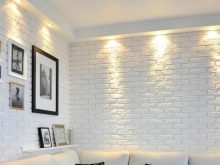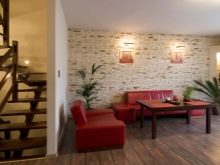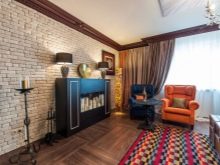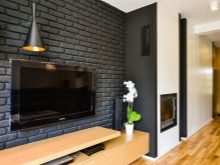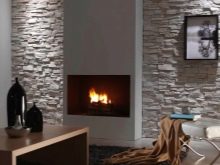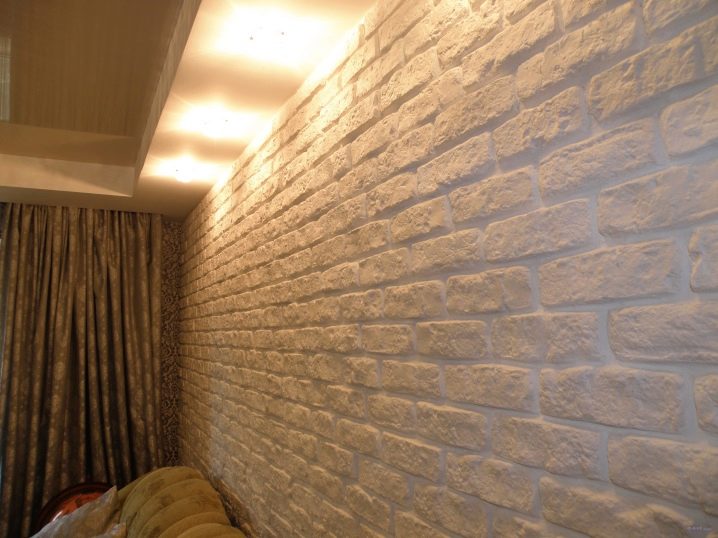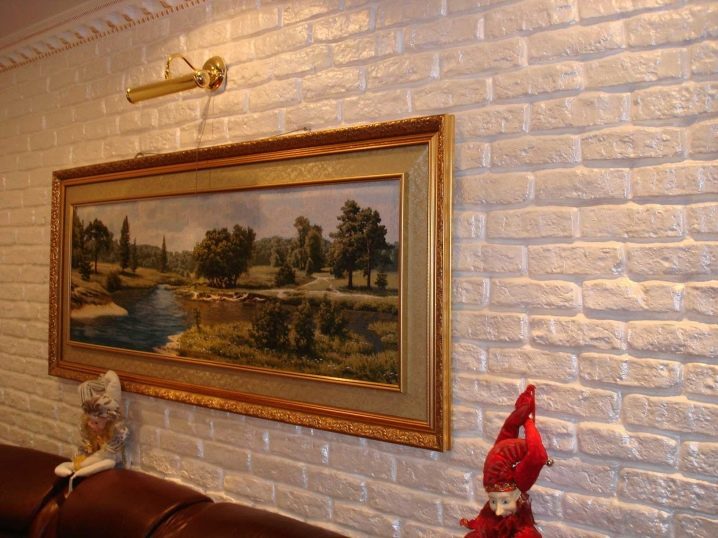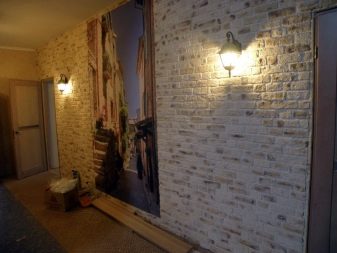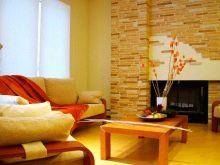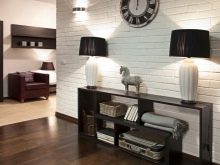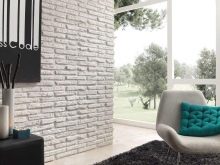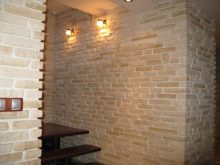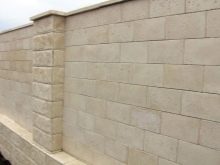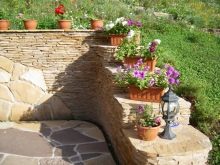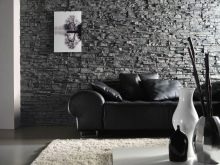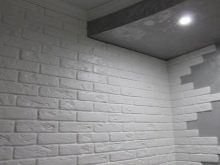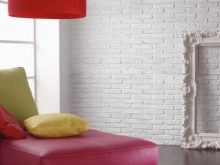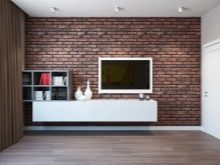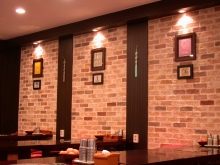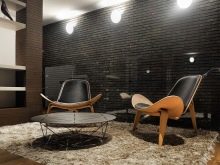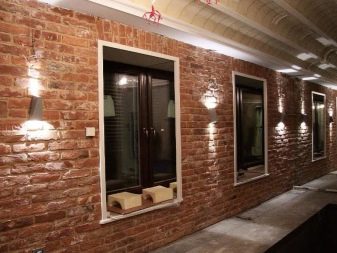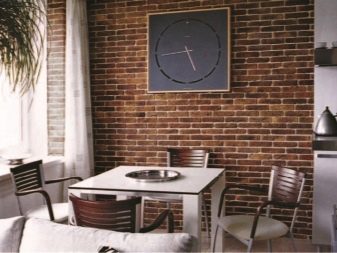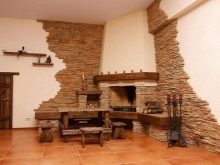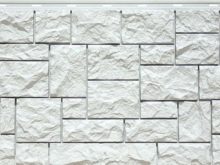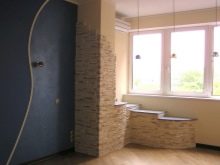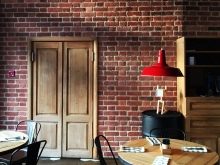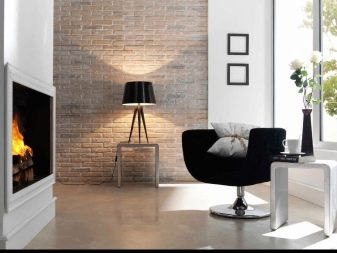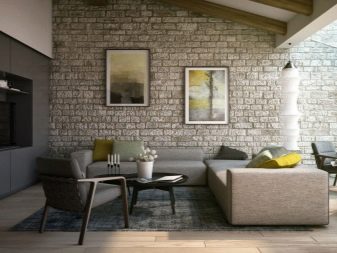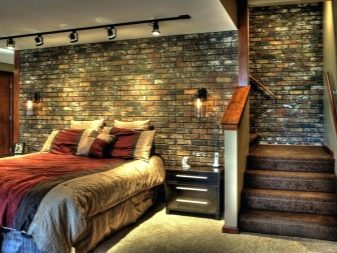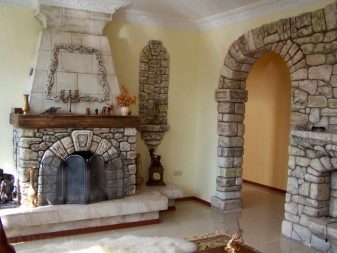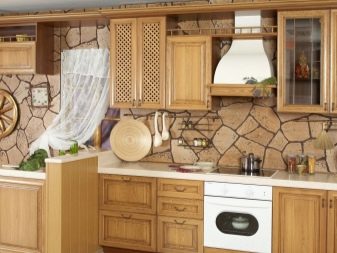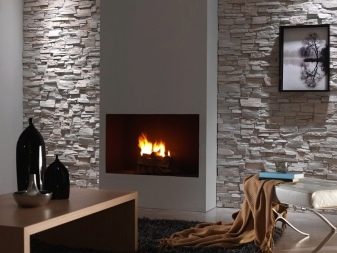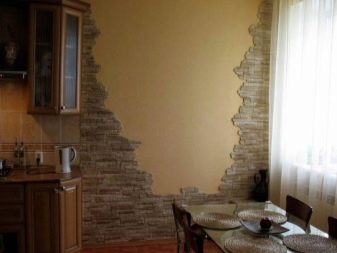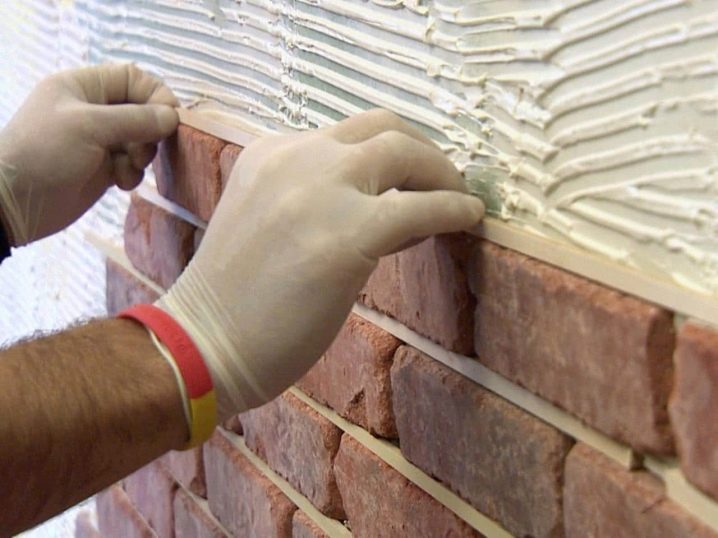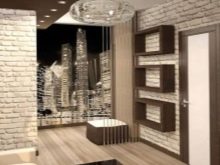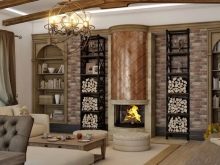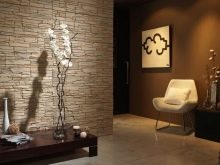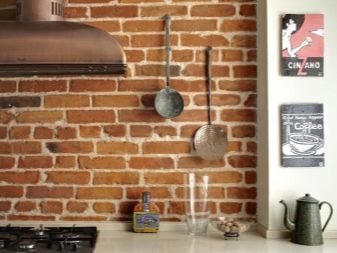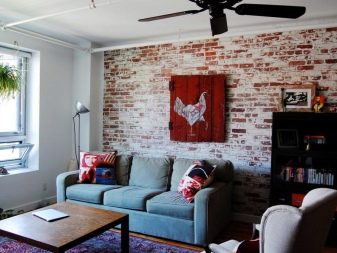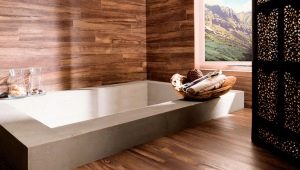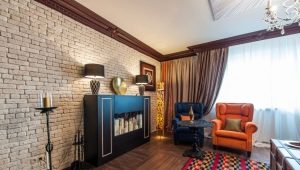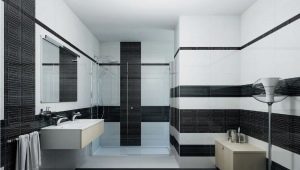Decorative tiles: the pros and cons
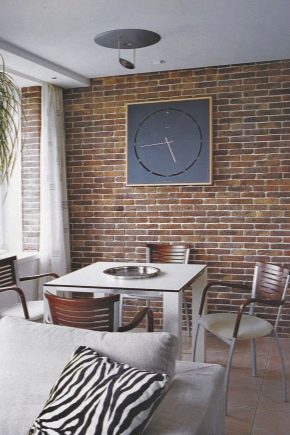
If you want the walls of your home to be decorated with a brick coating, there are several options: put natural brick, use ceramic or decorative tiles. Natural brick looks cumbersome, porcelain can seem rude, since its texture creates only a visual effect. Decorative tile looks natural. Let us evaluate the features of the appearance and texture of the coatings of decorative tiles, consider the types of design and ways of laying this material.
Special features
When choosing a material for finishing the dwelling, preference is given to a decorative tile due to its merits. These include lightness and strength, an abundance of colors finishing materials.You can lay out various designs from decorative tiles, which allows you to place an accent in different rooms of your home.
Decorative tiles can not lay out the entire wall. So you can zone the space, giving it a clear organization.
Depending on the type of composition, the finishing material can be used for different surfaces. Gypsum tile is a light material, so it is also used for cladding plasterboard partitions. However, the material does not tolerate water and can only be placed in dry rooms. It is characterized by a wide range of sizes and shapes, which allows for lining in the form of a different pattern.
A distinctive feature of this finishing material is a relief surface. It can be the same or asymmetric, which gives the lining originality. In addition, if desired, such material can be made independently, thereby saving the budget for the purchase of facing material. At the same time, the color scheme can be included in the composition, selecting the shade of the coating in the same style with the interior decoration.
Materials
Materials for creating decorative surfaces under stone and brick are plaster,some types of cement, sand, dyes. Gypsum tiles are often produced only for interior decoration. Cement tile is sometimes called artificial stone, it is equally suitable for cladding facades and walls.
At the price of materials are approximately comparable. Gypsum is a natural mineral. Its advantage is plasticity, which makes it possible to mold fragments of various shapes from it. Gypsum is a light and environmentally friendly material, which, depending on the production technology, can have a different texture, including an imitation of natural stone and brick.
pros
Decorative tile has a lot of advantages, so it is in great demand in the construction market. This finish is among the top three materials for facing surfaces. To evaluate the pros and cons of decorative stone, compare it with popular coatings. Consider the advantages of such facing in comparison with porcelain stoneware, wallpaper.
Decorative stone may seem a more attractive coating than porcelain for several reasons. It has a convex texture, easier to transport, can be bought with a small volume. Gypsum material can be put on its own: pieces smaller and lighter than porcelain stoneware, do not require glue to be applied to the entire surface. Decorative tiles suitable for combination with wallpaper, decorative plaster. It perfectly masks the irregularities of the walls.
If you compare with liquid wallpaper, the wall stone made of plaster is more durable, easy to install, does not crumble, durable. If you compare a decorative stone with wallpaper, it is better than wallpaper for hallways and living rooms in the space 2/3 of the floor, because in these gaps, coatings are subject to large mechanical stresses.
This finish will be more durable, it will not tear, will not crack with time. Moreover, if the wallpaper will have to change in 5 - 7 years, This material will decorate the surface of the wall much longer.
Minuses
One of the main disadvantages of the material is the absorption of moisture and destruction. In addition, this material is erased from the constant wet cleaning. Other disadvantages include the need to fit the pieces to each other using sawing, as well as the fragility of the fragments during transportation and stacking.
Cons in comparison with other materials should be considered if you choose a wall stone for rooms of a specific purpose.
Decorative stone inaccurately attached to the surface, more difficult to wash. It can not be put in the bathroom. In terms of prices, ceramic tile is comparable to a decorative type of lining. Compared with wallpaper, decorative stone is more expensive in price, because the average price of 1 square. m. of the stone is 800 rubles, for the same price you can buy a roll of wallpaper of 10 square meters. meters
Kinds
Gypsum tile is designed for interior and exterior vertical surfaces. The facades of buildings can be lined with this tile, despite the fact that she does not like moisture (this coating is suitable if the walls of the building are protected by a cornice). It resembles a stone or a brick not only with an image, but also with texture, and designs of decorative tiles are so diverse that they can imitate any kind of stone and even wood. The wall tile can be large-sized and small-sized. The ideas of using decorative tiles are interesting not only in interiors, but also in landscape design, for example, in:
- finishing fences;
- facing of beds;
- registration of garden partitions.
Decor
Perhaps the most interesting thing in a decorative tile is the types of decor. The centuries-old history of urban planning knows various facing materials for the facades of buildings that can be transferred to the medieval castles of Germany in the London-era Sherlock Holmes era. Stone for interior wall decoration allows you to imitate brick factories of the 20s and St. Petersburg of Peter the Great. All these decors can be embodied with the design and texture of decorative plaster tiles.
Kiprich
The manufacturer Vipkamni provides customers with a choice of all possible brick imitation options that will allow you to create unique architectural solutions, as well as loft-style wall coverings. Among the color solutions of textured bricks, the following tones of the palette are relevant:
- white;
- beige;
- gray-brown-white;
- red and black;
- vintage orange;
- the black.
With the decorative material of this brand, the finish will look stylish and extraordinary. For example, the Old Peter collection with a gray subtone looks incredibly natural: the painted shadows and texture will create a vintage effect even on the newest wall.The series is made in warm orange, red and black shades.
A rock
Design decisions under a stone become more and more fashionable as they allow to imitate internal furnish of ancient houses and fantastic locks. Contrast rough surface, delicate and beautiful pieces of furniture in fashion today. Designers are trying in every way to give the rooms a stylish loft format. In this they will be helped by the collections of the company “Decor Stone” under a stone, which reflect the urban theme. Consider the main line.
- Series Skalnik imitates the texture of the rock. It is presented in gray, white, brown.
- Collection "Plast" It is an imitation of a gray stone massif.
- Series "Northern Pearl" imitates the coastal granite of the Neva, it is presented in a cool urban range.
Antique tiles
Due to the various methods of creating fragments, the surface has a different effect. Some varieties echo the walls of ancient palaces and castles. Manufacturer Artirok is a range of options for finishing the facades and walls.Among the interesting samples can be noted options for travertine with a choice of any color.
It can be aged brick in the castle style, Roman, in ivory for antique interiors with columns, a picturesque Warsaw brick: there are lots of options. No less popular monolithic stone is reddish and dark gray under the German fortress. Samples "Ancient Castle" Suitable for facing the walls, carrot-orange and yellow colors are good for exterior decoration of small houses in the style of Provence.
Varieties with cobblestone texture will be useful for wall decoration with vertical landscaping (natural or artificial), you can also choose them for a garden path, pool decoration, facade styling or a fence. With an artificial cobblestone building looks more durable. Interesting decorative solution "Sahara" can be selected for partitions in creating an African style: the texture of the tile resembles coffee-colored sand.
Tips and tricks
Since the main decor created by tiles is an imitation of stone and brick, it is necessary that the room be consistent in terms of style. Consider how to achieve this with different types of tiles.
Loft
This is perhaps the most appropriate style for tile under the brick. The advantages of decorative tiles over ceramic are that it is warmer to the touch, has a pronounced texture and has many original solutions. An inexpensive solution would be laying brick 1/3 of the wall in combination with wallpaper in tone.
When finishing one wall with gypsum tiles, the remaining area can be made in gray.
Castle
Castle style is not the most fashionable, but can be interesting in a private house. Having laid out sections of the wall with a rough artificial stone imitating the wall of an ancient castle, for example, with a cobblestone or a monolithic gray stone, you can feel protected. It will remain to place a bed with a wrought-iron headboard, a fireplace, and also to hang up a heavy chandelier with candles.
Rustic
Country-style is easy to create with a brick or yellow artificial stone. However, the simplicity of the interior will be covered by its high cost. Such a coating will have to create an imitation of the board floor with the help of ceramics or laminate. The solution is uneconomic for the entire perimeter, therefore the best option would be to lay a section of the wall with decorative tiles,and the rest of the perimeter - decorative plaster or wallpaper.
Elements of decor
Facing stone is perfect for creating decorative elements. Cobble can be revetted part of the wall on which the plants are fixed.
Perfect for masking uneven corners, decorative corners of facing tiles under stone or rock.
Laying instructions
Lay decorative tile on liquid nails or tile glue. Overlapping can mask wall irregularities. The choice of adhesives is wide enough. This choice is related to whether the glue will be noticeable and will differ in color. For bright tiles suitable glue "Unifix".
This is an economical and inexpensive composition (only 345 rubles can be purchased packaging, which is enough for the preparation of 5-8 liters of glue). Glue must be diluted in the required amount, which will be used in less than an hour. If the tile is painted throughout the array, you need to prefer a more viscous glue.
Laying tiles produced from the bottom right corner upwards.
Beautiful examples in the interior
You can appreciate the attractiveness of the design using decorative tiles, refer to the examples of photo galleries.
- A stylish solution with photo murals depicting the city and decorative white brick-style tiles in a modern style. The spirit of the big city is transmitted through a combination of wall covering, which is usually used to decorate houses. This solution is more suitable for interiors of clubs and cafes, where people want to feel in the center of events.
- The interior of the chimney living room in a private house is well decorated with brick-like tiles, which add charm to the fireplace and complement the chandelier with a chandelier effect. The style is close to the American classics of the 19th century: it is reliable and well-made comfort. The decorative tile is practical.
- An example of the design of the partition, which began to seem more powerful, impressive and textured. Artificial flowers enliven the rough stone decor. You can see that the rest of the walls are quite modestly covered with dark beige wallpaper, so the decorative partition becomes an interior accent. In this embodiment, it would be nice to place photos or paintings on this partition.
- Beautiful decorative brick can be used in the decoration of the walls of the kitchen, if there are rough elements,like for example a hood. The brick looks natural, any items on it look more voluminous.
- The secret of the loft-style lies in the fact that the brick is perfectly combined with whitewashed wall. Tile can be trimmed with only one wall, the main thing - the presence of designer lamps.
How to lay decorative tiles, see the video below.
